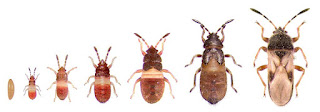With global warming perhaps those days are over and the age of unpredictability is here? Yet, the Farmers Almanac predicted what we got in 2017...more or less...so, not so unpredictable.
Even with the cooler temperatures and all the rain at the top of the season, we still ran into chinch bug problems in July and the usual outbreak of crabgrass. These are infestations, I believe, are only going to get worse for the average lawn since the tool box in Ontario is scarce of any adequate controls.
So what to do?
Lawn care has always been a team effort, between us, the home owner and the weather. Yet, now it seems the weather has gone rogue, which makes it even more important to concentrate on the health of the lawn to hold back the invasion of weeds and insects.
If a homeowner is not prepared to make sure their grass is cut properly and watered adequately...well, in the long term, it's not going to matter what we do and you are going to be disappointed with the results.
Just remember, that porridge isn't going to make itself and Goldilocks will pass by your property until she finds a lawn where the conditions are just right.
See you again in 2018.








